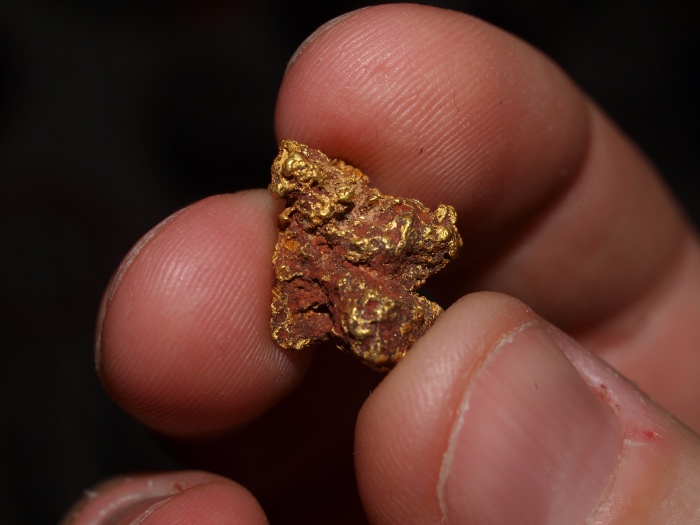
The first mining in this region occurred as early as 1849, almost immediately following the initial gold discoveries on the American River. Miners soon found extensive gold deposits on the Feather River as well, and they took to working the gravels right away.
For the first few years, the initial settlement was called Ophir City. By 1855 the name had been changed to Oroville, and it was a full fledged mining town.
Bidwell Bar was the first strike along the shores of the river. Placer miners worked day and night to process these rich gravels and recover gold. Amongst the rocks and gravel were exceptionally rich gold deposits. The site of Bidwell Bar is now covered by Oroville Reservoir.
Large nugget were not uncommon during these early days. Of course, most of them were smelted down immediately. Back then, the value was in the gold content only.

Dredge Fields of Oroville
Further downstream, south of town along the Feather River, were the dredge fields. This is where the river drains out into the valley. While the narrower canyons upstream provided good opportunity for individual “pick and shovel” miners, the gravel deposits in the valley were too deep to be of much interest to these early miners.
The introduction of gold dredges made this ground highly profitable. The gold was deep with considerable overburdened, but the dredges dug night and day. At the peak of mining, there were 35 different dredges being operated by a dozen different companies.
The dredge fields were anywhere from 1-2 miles wide and extended along the Feather River for a distance of 9 miles.
Total gold production from these dredges is estimated to be just shy of 2,000,000 ounces.

Gold Values
With the price of gold at the time being around $20 per ounce, the values of these gravels averaged around 0.15 to 0.25 cents per yard. This wouldn’t be enough for an individual miner to buy a can of beans, but these huge machines could process so much material that this was more than enough to keep the dredges working for decades.
Purity of the gold was very high, ranging from .915 to .930.
Small quantities of platinum were also recovered from these dredging operations.
Next: 17 of California’s Richest Gold Mining Locations

